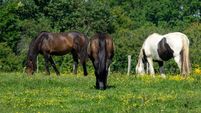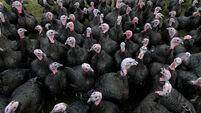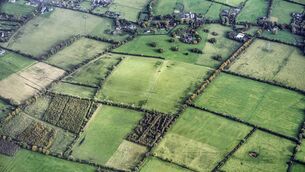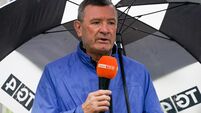Market signals say no autumn cattle supply glut
Market signals remain positive for beef finishers, with prices at the factories stable, as autumn trading gets nearer, .
Expecting beef prices at the factories to harden by very much at this time of the year would be out of character with the usual seasonal pattern.
But 2017 could be the season to buck the traditional trends.
Predicting the beef trade is among the most hazardous of challenges, because there are so many unpredictable factors, from weather to markets, cattle supply, and currency movements, that it’s akin to selecting the winning numbers of the Lotto.
Nevertheless there are some signals which hold hope for optimistic cattle finishers.
It seems that the current strong markets for beef will see the year out, and factories have weekly demand for at least 32,000 head and maybe a little more.
Fear of a cattle supply glut this autumn is receding.
That said, the processors are very price-conscious, and anxious to pull back a bit from the current price level.
But it will be challenging for processors to cut prices if the current market trends continue, which are keeping supply and demand in balance.
Quoted base prices for both steers and heifers are unchanged this week.
The steers are at 400-405 cents/kg, and there are indications that a bit more of the supply is making the higher end of the price range.
Heifers are steady at a premium of 10 cents/kg over steer prices, in a 410-415 cents/kg range.
There are isolated reports of some finishers getting a few cents more, particularly for better quality heifers, but it is not very freely available, with the processors very wary of conceding anything that would be perceived as a rise in prices.
Nor is there any change in prices on offer for cows, although there are reports of more interest from processors in cows.
Quotes for O/P-grade cows are ranging from 300 to 340 cents/kg, and up to 360 cents/kg is on offer for R-grade.
The supply to factories remains tight, at just under 31,900 last week, slightly increased from the previous week.
In Britain, the beef trade remained steady over the past week, with good demand and relatively tight supplies of finished cattle,
Prices increased again, with R4L-grade steers averaging equivalent to 455 cent/kg (with the euro at 89p, and VAT included).
In France, the market is reported to have weakened, with beef cattle prices easing.
Trading remains best for domestically produced cattle.
In contrast, the market in Italy has been showing some improvement on the back of higher consumption due to the start of the busy tourist season, with demand increasing for hindquarter cuts.
Lamb prices trail 2016 levels after latest cuts
It has been another difficult week for sheep farmers after prices were hit again, with a cut of as much as 30 cents/kg leaving prices behind where they were a year ago.

Most of the processors have reduced their quoted prices for this week to a base of 500 cents/kg, ranging as high as 515 cents/kg, plus the usual bonus payments for quality of up to 10 cents/kg.
Processors point to the weakness of the market in France, where consumption has dropped, putting pressure on the trade, and to the supply of lambs increasing.
In the marts, there was also a quieter tone to the trade on Monday, with prices easing as much as €8/head, after numbers increased, and demand did not match that of recent weeks.
There were 620 head on offer Monday at Corrin Mart, where the trade was back from last week. The butchers’ lambs sold for up to €73 over, and ranged back to €55 over. The prices for factory lambs peaked at €64 over and ranged back to €40 over.
There was an entry of 750 head on Monday at Kilkenny Mart, where the prices were back by €3-€8/head. Butchers’ lambs sold for up to €66 over and the factory lots peaked at €60 over.
In Britain, there was little change in the trade last week. Lambs were making the equivalent of around 516 cents/kg. Supplies for the year to date remain strong, up 7% compared to the same period in 2016.
Between January and May 2017, the UK’s imports were back 14% compared to the corresponding period last year, due to the weaker sterling and lower supplies from New Zealand.
Pig price trend positive for farms
Pig farmers have welcomed a positive week of demand from all processors forcing the trade to continue a slow upward price trend.

According to IFA, no official price rises were reported, but prices reported by the Department of Agriculture showed an increase of 4c/kg in July. Farmers say prices range from €1.72 to €1.76/kg for the majority of pigs this week, and strong demand from processors for the last few loads of pigs to fill their weekly demand resulted in stronger spot prices, of up to €1.80.
IFA welcomed the EU-Japan trade agreement which will see reduced tariffs from 2018 onwards on all EU pigmeat going into Japan.
According to analysts at Rabobank, EU pigmeat exports are slowing due to strong prices, with tight supply and firm demand maintaining upward price pressure and starting to challenge exporters.
The Rabobank experts predict a 2% pork production in 2017 in China, the main pigmeat import market.
The longer term OECD-FAO forecasts have global pig meat production increasing 10% between 2016 and 2026, including 12% in China.









